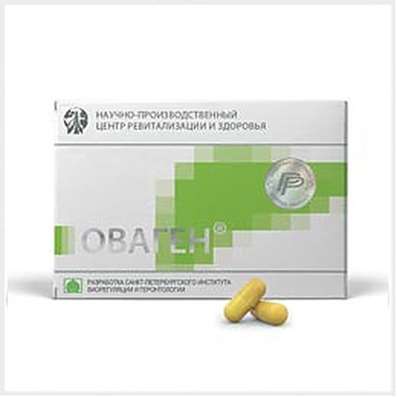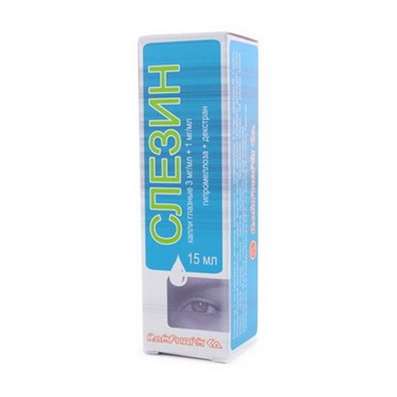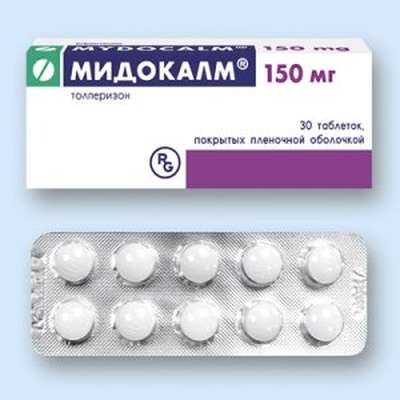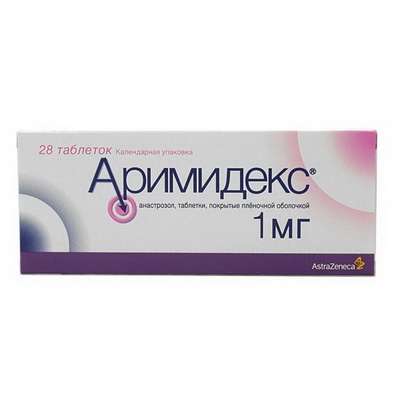Instruction for use: Relium
I want this, give me price
Active substance: Diazepam*
ATX
N05BA01 Diazepam
Pharmacological groups:
Anxiolytics
Nosological classification
The nosological classification (ICD-10)
A35 Other forms of tetanus: Tetanus local; Tetanus; Muscle spasms in tetanus; Clostridiosis wounded; Tetanus; Hydrophobia (hydrophobia)
F10.2 Syndrome of alcohol dependence: Dipsomania; Drunken drunkenness; Dependence on alcohol; Psycho-organic syndrome in chronic alcoholism; Alcoholism; Alcohol addiction; Drunken state; Alcohol abuse; Ideator disorder in alcoholism; Obsessive attraction to alcohol; Neurotic symptoms with alcoholism; Pathological attraction to alcohol; Chronic alcoholism; Quarterly drinking; Decreased desire for alcohol
F10.4 Abstinent state with delirium: Alcoholic delirium; White fever alcoholic; Delirium; Delirious condition with alcoholism and drug addiction
F10.5 Alcoholic alcohol: Alcoholic hallucinations; Psycho-organic syndrome in chronic alcoholism; Alcoholic psychosis; White fever alcoholic; Delirium; Delirium with alcoholism; Acute alcoholic psychosis; Delirious condition with alcoholism and drug addiction; Acute alcoholic psychosis with autonomic disorders
F41 Other anxiety disorders: Anxiety status; Anxiety; Chronic alarm; Sense of anxiety; Anxious-hypochondria; Stopping an alarm; Nonpsychotic anxiety disorders
F48 Other neurotic disorders: Neurosis; Neurological diseases; Neurotic disorders; Neurotic condition; Psychoneurosis; Anxious-Neurotic Conditions; Chronic neurotic disorders; Emotional reactive disorders
G24 Dystonia: Violation of muscle tone
G47.0 Sleep disturbance and sleep disturbances [insomnia]: Insomnia; Insomnia, especially the difficulty of falling asleep; Desynchronosis; Prolonged sleep disorder; Difficulty falling asleep; Difficulty falling asleep; ; Insomnia; Short-term and transient sleep disorders; Short-term and chronic sleep disorders; Short or shallow sleep; Disturbance of falling asleep; Sleep disturbance, especially in the phase of falling asleep; Sleep disturbances; Sleep Disorders; Neurotic sleep disorder
Shallow shallow sleep; Shallow sleep; Unsatisfactory quality of sleep; Night Awakening; The pathology of sleep; Postmodern violation; Transient insomnia; Problems with falling asleep; Early Awakening; Early morning awakening; Sleep disorder; Persistent insomnia; Difficult to fall asleep; Difficulty falling asleep; Difficulty falling asleep in children; Difficulty falling asleep; Persistent insomnia; Deterioration of sleep; Chronic insomnia; Frequent nocturnal and / or early morning awakenings; Frequent nocturnal awakenings and a feeling of shallow sleep; Night Awakenings
O15 Eclampsia
R25.2 Cramp and spasm: Muscle spasms in tetanus; Pain syndrome with smooth muscle spasms; Pain syndrome with smooth muscle spasms (renal and biliary colic, intestinal spasm, dysmenorrhea); Pain syndrome with spasms of smooth muscles of internal organs; Pain syndrome with spasms of smooth muscles of internal organs (renal and biliary colic, intestinal spasm, dysmenorrhea); Painful muscular spasm; Mimic spasms; Muscular spasticity; Muscle spasms; Muscular spasms of central origin; Muscular spasticity; Muscle spasm; Neurological contractures with spasms; Night cramps in the extremities; Nocturnal cramps in the legs; Night cramps calf muscles; Symptomatic convulsive state; Vesta Syndrome; Spasm of smooth muscles; Spasm of smooth vascular musculature; Spasm of muscles; Spasm of striated muscle due to organic diseases of the central nervous system; Spasms of smooth muscles of internal organs; Muscle Cramps; Skeletal Muscle Cramps; Spastic states of the striated musculature; Spasmodic pain syndrome; The spastic condition of smooth muscles; Spasticity of skeletal musculature; Muscle cramp; Convulsions; Cramps of the calf muscles ; Convulsions of central origin; Convulsive condition; Convulsive Syndrome; Convulsive status in children; Tonic convulsions; Cerebral spastic syndrome; The phenomenon of a folding knife
T08-T14 Injuries of unspecified part of trunk, limb or body region
Z100.0 * Anesthesiology and premedication: Abdominal surgery; Adenomectomy; Amputation; Angioplasty of the coronary arteries; Carotid artery angioplasty; Antiseptic treatment of skin in wounds; Antiseptic treatment of hands; Appendectomy; Atheroctomy; Balloon coronary angioplasty; Vaginal hysterectomy; Venous bypass; Interventions on the vagina and cervix; Interventions on the bladder; Interference in the oral cavity; Reconstructive-reconstructive operations; Hand hygiene of medical personnel; Gynecological Surgery; Gynecological interventions; Gynecological operations; Hypovolemic shock during surgery; Disinfection of purulent wounds; Disinfection of the edges of wounds; Diagnostic Interventions; Diagnostic procedures; Diathermocoagulation of the cervix; Long-term surgeries; Replacement of fistulous catheters; Infection in orthopedic surgical interventions; Artificial heart valve; Kistectomy; Short-term outpatient surgery; Short-term operations; Short-term surgical procedures; Cryotyreotomy; Blood loss during surgical interventions; Bleeding during surgery and in the postoperative period; Laser coagulation Laserocoagulation; Laser retinopathy of the retina; Laparoscopy; Laparoscopy in gynecology; Likvornaya fistula; Small gynecological operations; Small surgical interventions; Mastectomy and subsequent plastic surgery; Mediastinotomy; Microsurgical operations on the ear; Mukinging operations; Suturing; Minor surgery; Neurosurgical operation; Eclipse of the eyeball in ophthalmic surgery; Orchiectomy; Pancreatectomy; Pericardectomy; The rehabilitation period after surgical operations; Reconvalence after surgical intervention; Percutaneous transluminal coronary angioplasty; Pleural Thoracocentesis; Pneumonia postoperative and post traumatic; Preparing for surgical procedures; Preparing for a surgical operation; Preparation of the surgeon's arms before surgery; Preparation of the colon for surgical interventions; Postoperative aspiration pneumonia in neurosurgical and thoracic operations; Postoperative nausea; Postoperative hemorrhage; Postoperative granuloma; Postoperative shock; Early postoperative period; Myocardial revascularization; Resection of the apex of the tooth root; Resection of the stomach; Bowel resection; Resection of the uterus; Liver resection; Small bowel resection; Resection of a part of the stomach; Reocclusion of the operated vessel; Gluing of tissues during surgical interventions; Suture removal; Condition after eye surgery; Condition after surgery in the nasal cavity; Condition after gastrectomy; Condition after resection of the small intestine; Condition after tonsillectomy; Condition after removal of duodenum; Condition after phlebectomy; Vascular Surgery; Splenectomy; Sterilization of surgical instrument; Sterilization of surgical instruments; Sternotomy; Dental surgery; Dental intervention on periodontal tissues; Strumectomy; Tonsillectomy; Thoracic surgery; Total gastrectomy; Transdermal intravascular coronary angioplasty; Transurethral resection; Turbinectomy; Removal of a tooth; Cataract removal; Removing Cysts; Removal of tonsils; Removal of myoma; Removal of mobile milk teeth; Removal of polyps; Removal of a broken tooth; Removal of the uterus; Removal of seams; Urethrotomy; Fistula of the luminal ducts; Frontoetmoidogamotomy; Surgical infection; Surgical treatment of chronic ulcers of extremities; Surgery; Surgery in the anus; Surgery on the large intestine; Surgical practice; Surgical procedure; Surgical interventions; Surgical interventions on the digestive tract; Surgical interventions on the urinary tract; Surgical interventions on the urinary system; Surgical interventions on the genitourinary system; Surgical intervention on the heart; Surgical procedures; Surgical operations; Surgical operations on veins; Surgical intervention; Vascular Surgery; Surgical treatment of thromboses; Cholecystectomy; Partial resection of the stomach; Extraperitoneal hysterectomy; Percutaneous transluminal coronary angioplasty; Percutaneous transluminal angioplasty; Coronary artery bypass grafting; Extirpation of the tooth; Extirpation of infant teeth; Extirpation of pulp; Extracorporeal circulation; Extraction of the tooth; Extraction of teeth; Extraction of cataracts; Electrocoagulation; Endourological interventions; Episiotomy; Ethmoidotomy; Complications after tooth extraction
Composition and release form
1 tablet coated with diazepam contains 5 mg; in a blister of 20 pcs., in a cardboard box 1 blister.
1 ml solution for injection - 5 mg; in ampoules of 2 ml, in a cardboard box 50 pcs..
Pharmachologic effect
Mode of action - anticonvulsant, anxiolytic, myorelaxing, sleeping pills.
Interacts with benzodiazepine receptors of the brain and spinal cord, the cerebellum; and increases the inhibitory effect of GABA on the central nervous system.
Indications for the Relium
Neuroses, anxiety states, incl. at somatic diseases (cancer, heart failure, arterial hypertension, peptic ulcer of the stomach and duodenum); anxiety, sleep disorders, alcoholism abstinence, epilepsy, epileptic status, central muscle spasms, post-traumatic states and motor rehabilitation (to reduce skeletal muscle tension), tetanus, eclampsia, indomitable vomiting, premedication.
Contraindications
Hypersensitivity, respiratory disorders of central origin, severe respiratory failure, dizziness, impaired consciousness, glaucoma, myasthenia gravis, depressive states with suicidal tendencies, balance disorders.
Application in pregnancy and lactation
Contraindicated (especially in the first trimester of pregnancy). For the period of treatment should stop breastfeeding.
Side effects
Drowsiness, fatigue, weakness, dizziness, locomotor ataxia, weakened memory, decreased ability to concentrate and speed of reaction, decreased skeletal muscle tone, weakened libido, hypotension, bradycardia, collapse, speech, vision, confusion and disorientation, loss of consciousness, paradoxical reactions (psychomotor agitation, convulsions, anxiety, restlessness, insomnia, muscle tremor, aggressiveness), skin allergic reactions, after IV introduction: thrombosis, phlebitis, symptoms of Raynaud's disease.
Interaction
The effect is enhanced by anti-epileptic, antihistamines, narcotic analgesics, antipsychotics, tricyclic antidepressants, sympatho- and anticholinergics, alcohol, muscle relaxants (d-tubocurarine, etc.), weaken - nicotine. Cimetidine, disulfiram, isoniazid - prolonged (slow down elimination); rifampicin, phenobarbital - reduce the effect (stimulate biotransformation).
Dosing and Administration
Tablets: Inside, 5-20 mg in divided doses for a short time.
Alcohol withdrawal: 10 mg 3 times a day. If necessary, the dose can be increased to 60 mg / day.
Insomnia: 5-10 mg for half an hour before bedtime, for a short time.
Spastic states of the muscles: 5-15 mg / day in several receptions. If necessary, the dose can be increased to 60 mg.
Children: 2-3 years - 2-5 mg / day in 2-3 doses, 4-7 years - 4-6 mg in 2-3 doses, 8-18 years - 5-8 mg in 2 divided doses.
Solution for injection: IM (deep into large muscles) or IV, adults - 2-20 mg.
Acute cases of anxiety and anxiety: IM or IV, - 2-5 mg, if necessary again after 3-4 hours.
Severe phobic disorders: IM or IV, - 5-10 mg, if necessary, repeat after 3-4 hours.
Alcohol abstinence syndrome: IM or IV, - 10 mg once, then, if necessary, 5-10 mg after 3-4 hours.
Premedication: IV, slowly, usually 10 mg (maximal - 20 mg, provided that the patient does not receive narcotic analgesics at the same time) or IM, 30 minutes before the procedure - 5-10 mg.
Tetanus, athetosis, muscle spasms: IM or IV, - 5-10 mg (with tetanus, it is possible to increase the dose);
Epileptic status and severe recurrent convulsive seizures: IV or IM, first - 5-10 mg once, possibly again 10-15 minutes and 2-4 hours, maximum - 30 mg.
Electroimpulse therapy: IV, 5-10 minutes before the procedure, 5-10 mg.
Children. Tetanus: IM or IV (slowly), with 5 weeks of life - 1-2 mg, from 5 years and older - 5-10 mg, if necessary again after 3-4 hours.
Epileptic status and severe, recurrent convulsive seizures: intravenously slowly, under the control of respiratory function, with 5 weeks of life and up to 5 years - 0.2-0.5 mg for 2-5 minutes (maximum to 5 mg); from 5 years and older, IV slowly, 1 mg for 2-5 minutes (maximum to 10 mg). If necessary, the administration is repeated after 2-4 h.
To prepare a solution for intravenous administration, the contents of the ampoule are diluted to 10 ml with saline or 5% glucose solution and administered at a rate of up to 4 ml (4 mg) per minute; for intravenous drip infusion - the contents of 10 ampoules (100 mg) are diluted in 500 ml of saline or 5% glucose solution and administered iv at a rate of 40 ml / h (8 mg of active substance).
Precautionary measures
Do not administer parenterally in conditions of shock, coma, acute alcohol poisoning and after head injuries. When violations of the liver and kidneys need to reduce the dose. Elderly or debilitated patients are recommended to use 1/2 of the usual dose. With caution appoint people with an increased risk of drug dependence, with extreme caution - to young children (possibly a respiratory function disorder). During the treatment period and before 5 days after the end of the day, you should not drive a car, serve a moving mechanical device, or consume alcohol.
Storage conditions for Relium
In a dry, the dark place at a temperature below 25 ° C.
Keep out of the reach of children.
Shelf life of Relium
3 years.
Do not use after the expiry date printed on the package.

 Cart
Cart





